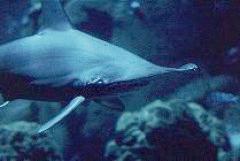First Aid for SHARK ATTACK

For skin scrapes and minor bites, scrub directly in the wound with clean gauze or a cloth soaked in clean, fresh water. Press on the area to stop bleeding. If bleeding persists, or the edges of a wound are jagged or gaping, the victim likely needs stitches. Taping a small bite shut is often an effective alternative, but may leave a more visible scar than suturing. For more details on wound care, see Staph, Strep and General Wound Care. For numbness or inability to move a finger or toe normally, see a doctor immediately. Victims who appear pale, sweaty, and nauseated are in danger of fainting. Lower the victim to the ground.
In wounds where a major artery or vein is severed, a victim can die rapidly from blood loss. Often, a rescuer can stop bleeding from large, severed blood vessels by firmly pressing anything handy (swimsuit, towel, hand) directly on the wound. Such pressure usually causes the vessel to clamp down in spasm, and clots begin to form. In the water, however, this procedure can be nearly impossible, especially while helping a victim to shore, or to a boat. In these cases, when bleeding may be fatal, a tourniquet is appropriate. Trying a surfboard leash or dive mask strap around a massively bleeding limb could save a life.
Help a bleeding victim get out of the water as quickly as possible. At the beach, or in the boat, control bleeding by pressing directly on the wound, then remove any tourniquets. Leaving a tourniquet on can cause permanent injury. Maintaining pressure on the wound, take the victim to an emergency room as quickly as possible.
